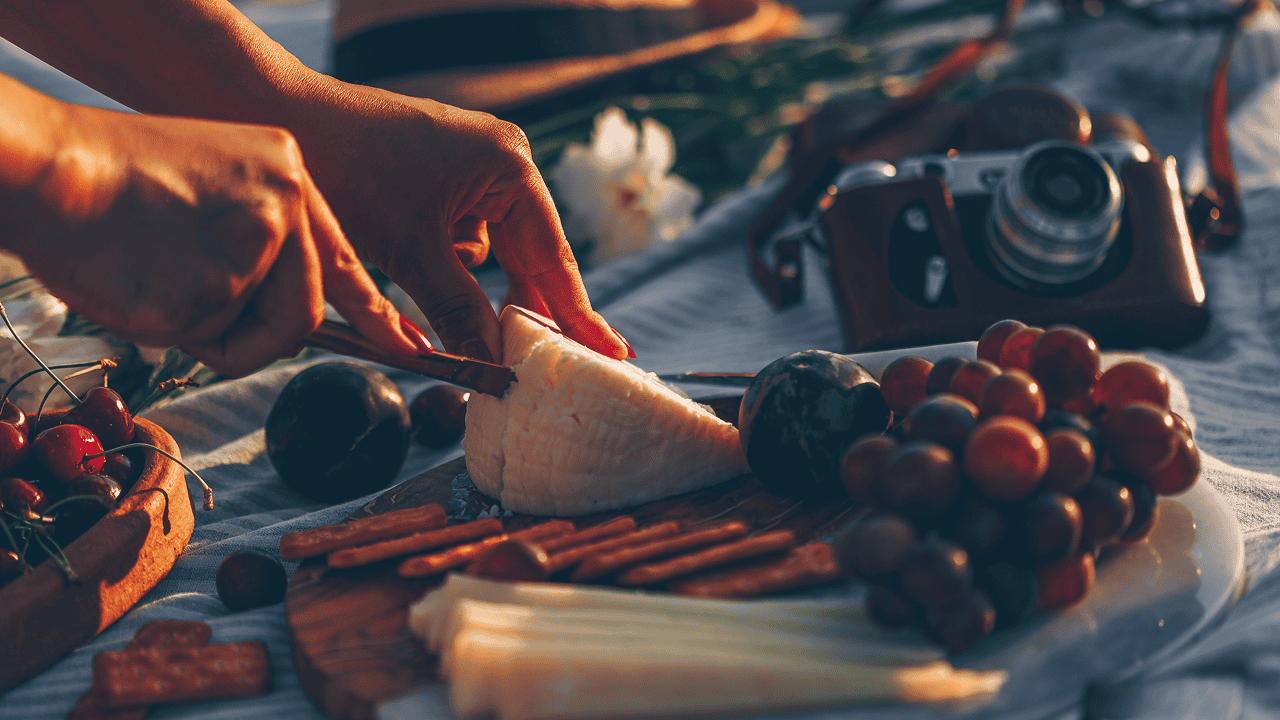
Harvest and Tide A Seasonal Journey Through Delaware Food and Dining
Delaware eats with the calendar open. In the 302, flavor is a function of distance and timing: boats that dock before breakfast, farms that deliver by lunch, kitchens that rewrite the chalkboard before dinner. Restaurants, cafés, bakeries, and breweries here don’t chase spectacle; they court peak ripeness, cold water, warm ovens, and repeat guests. The result is a dining culture that feels personal and grounded—run by Delaware businesses that know their producers by first name and their regulars by order. This guide follows the seasons to show how the state’s food scene actually works in practice, from spring’s soft-shells to winter’s slow braises, with deep looks at the places that keep the network humming: dining rooms, third‑place cafés, dawn‑lit bakeries, and taprooms that serve as neighborhood living rooms.
Spring: When Menus Wake Up
Spring in Delaware arrives on the plate before it shows up on the weather app. The first signs are small and fragrant: asparagus with snap you can hear, early strawberries that taste like a promise, lettuces so tender they require a lighter hand with dressing. Kitchens respond by simplifying. After months of reduction sauces and braises, chefs reach for lemon, herbs, and olive oil. A typical dish in a Wilmington dining room might be seared scallops over a tangle of barely warmed spring peas and mint, or a chicken breast pan‑roasted with ramps and finished with a spoon of pan juices rather than a heavy glaze. It’s not restraint for its own sake; it’s a vote of confidence in the raw materials.
Along the coast, the season has its own headline act: soft‑shell crabs. When the first deliveries roll in, specials boards light up from Lewes to Bethany. Some kitchens fry them hard and fast and tuck them into sandwiches with a swipe of lemony mayo; others set them over creamy grits and spring vegetables, letting the sweetness of the crab speak in a quieter register. The timing is brief, which is part of the thrill. Delaware diners learn to ask, “Do you have them yet?” and to order them when the answer is yes.
Cafés shift gears, too. Dark roasts give way to brighter coffees with citrus and floral notes, and pastry cases trade winter’s spice for spring’s freshness. One morning might offer a ricotta tart dotted with early berries or a lemon bar that snaps like a line drive. Lunches get lighter—quiches loaded with green things, soups that taste like gardens, sandwiches built around a crisp shave of radish and buttered baguette. The best cafés feel almost greenhouse‑like in spirit: plants in the windows, sunlight on wood tables, a sense that the room itself is leaning toward the light.
Bakeries find similar renewal. Sourdough remains a staple, but loaves skew toward grain blends that feel nimble rather than heavy. Laminated pastries brighten—pistachio frangipane in a croissant, a rhubarb‑strawberry danish that refuses to be cloying. If a bakery keeps a savory program, you’ll see spring onions and goat cheese appearing in tarts; if it sells flour by the bag, there’s a decent chance it comes from a regional mill that the bakers actually visit. This transparency—where your flour, butter, or berries came from—is one of the quiet strengths of 302 businesses. It’s not marketing copy; it’s how they work.
Breweries ring in the season with effervescence. Crisp saisons, kölsches, and pale lagers make a strong showing, and many release small batches infused with local honey or herbs. Taprooms open windows and patios, kids and dogs return like migrating birds, and food trucks lean lighter: grilled fish tacos, salad‑forward plates, and fries dusted with something green and citrusy. A pint in April or May often tastes like a handshake for summer.
Summer: The State at Full Volume

Summer is Delaware’s crescendo. Farmers’ markets become Saturday rituals, and the road to the beaches might as well be lined with menu ideas. Restaurants design dishes around corn and tomatoes the way orchestras write for brass and strings—bold and confident. A classic plate up north might be a thick pork chop with charred sweet corn, blistered cherry tomatoes, and basil; at the coast, it could be grilled drumfish with a salad of heirlooms and cucumbers slicked with olive oil and salt. Raw bars are in high song, and crab feasts turn meals into events. Paper, mallets, butter, vinegar, and Old Bay do the rest.
Cafés earn their hero badges in July and August. Service is a choreography of iced drinks—cold brew concentrates, flash‑chilled pour‑overs, espresso shaken to a foam. Food counters offer chilled soups, salads that crunch and gleam, and sandwiches on bread that can stand up to tomato juice without collapsing. When the afternoon heat hits, the pastry case proves that fruit is better respected than disguised: blueberry galettes with just enough sugar to frame the berries, peach hand pies that leave your fingers sticky and your mood improved.
Bakeries treat stone fruit with reverence. You’ll see peach pies with lattice tops and honest crusts, apricot and almond tarts, and morning buns scented with lemon zest that tastes like sunlight. Savory bakers lean into focaccia topped with tomatoes and herbs, country loaves perfect for grill‑marked bruschetta, and baguettes that snap audibly on the boardwalk. Lines form early, not because scarcity is a gimmick but because freshness matters. In a small state, word travels fast when the rye is particularly good or the croissants hit that day’s perfect lamination.
Breweries match the weather with sessionable beers made for long conversations and short waits between sips. Wheat beers flirt with citrus peel, pilsners offer snap and clarity, and fruited sours borrow color and perfume from the markets. Taprooms become de facto community centers, with trivia nights, acoustic sets, and a parade of food trucks that rotate from tacos to wood‑fired pizza to seafood platters that taste like they came in on the morning tide. For families, these spaces are a gift: room to roam, background buzz, and food that works for every age.
Autumn: Comfort With an Edge
Fall is Delaware’s most balanced season for eating. The markets are still generous, the air encourages appetite, and menus rediscover the pleasures of heat and time. Restaurants in Wilmington move toward richer sauces and deeper roasts—duck with cherries and cider reduction, short ribs over parsnip purée, pumpkin gnocchi with brown butter and sage—without losing the brightness of late greens or the acidity of apple. Downstate, seafood pivots from crab to oysters, which gain complexity as waters cool. A dozen from a favorite bed alongside a glass of something crisp counts as both appetizer and education.
Cafés pull the darker roasts forward and start building spice into the pastry case. A cinnamon roll that might have felt heavy in July reads as generous now; a slice of apple cake becomes the correct answer to questions you didn’t know you had. Lunches are heartier—grilled cheese upgraded by an aged cheddar and a swipe of apple butter, soups that actually simmered all morning, and quiches that let mushrooms and squash do what they do best. The rooms themselves seem to deepen, too: later light, more conversations that bend toward the philosophical, and more regulars settling into their same corner.
Bakeries treat apples as a season, not a fruit. Tarts, galettes, hand pies, and turnovers appear in succession, each revealing a different texture or spice. Loaves skew toward blends that welcome soup—rye with caraway, seeded whole grains, and sourdoughs that ask to be torn rather than sliced. If a bakery runs classes, this is when they fill: people want to learn the secret behind that crackle or how to control fermentation in a cool kitchen. The answer is usually patience, but the practice is more helpful than the theory.
Breweries lean maltward without abandoning balance. Oktoberfest styles arrive with a clink, ambers and brown ales return to the conversation, and stouts begin their slow entrance. Many breweries build fall dinners into their calendars—pairing events that feature braises, roasted roots, and cheeses that can hold their own against darker beer. The mood changes with the leaves: still social, still family‑friendly, but slower, happier to linger, less about lineups and more about neighbors catching up.
Winter: Time, Heat, and Memory
Winter in Delaware proves how generous simple things can be. Restaurants focus on stocks, reductions, and texture—crispy skins over soft interiors, spice that warms without shouting, portions that satisfy without excess. Chowders and stews do real work on cold days, and seafood isn’t sidelined so much as reassigned. Mussels steam in garlicky broth, oysters bake under herbed crumbs, and white fish meets brown butter and capers in a way that never goes out of style. Dining rooms glow warmer in winter, both literally and in tone. Service slows in a good way; the second glass of wine becomes less a decision than an inevitability.
Cafés earn their keep by being the room people want to sit in when the wind cuts. Espresso drinks lean silkier, hot chocolate returns to adult seriousness, and tea services get the attention they deserve. Pastry programs revisit winter citrus and spice—orange‑almond cakes, ginger‑forward cookies, and sticky toffee puddings that turn any afternoon into a small holiday. Laptops stay, but conversations grow longer and more personal. It’s the season when baristas know which regulars need a “the usual” and which ones need something new.
Bakeries become morning sanctuaries. Bread baskets skew darker and richer—rye, pumpernickel, whole grains seeded like starfields—and laminated doughs bring comfort to the table: kouign‑amann that caramelizes sugar into a gift, croissants that hold their shape under jam, and savory pastries that pair with a bowl of soup. Holiday specials arrive on their own timetables—stollen, bûche de Noël, cookies that travel to family tables—but the daily breads and pies keep the neighborhood fed and happy. When a bakery sells out early in winter, it reads not as scarcity but as success: an entire community choosing warmth https://bestof302.net/building-your-delaware-life-team-a-guide-to-trusted-services-and-professionals/.
Breweries find their deepest register now. Stouts, porters, and barleywines lead, often with small releases aged on wood or kissed by cacao nibs and coffee. Food turns toward braises and roasts, and taproom kitchens press the advantages of heat: mac and cheese that respects béchamel, pretzels that ask for mustard, and desserts that understand chocolate more than sugar. Trivia and music continue, but winter also belongs to the board‑game night and the unhurried conversation. It’s when you realize a taproom is not merely a place to drink; it’s social infrastructure.
Neighborhoods, Not Just Names
One of the best ways to navigate Delaware dining is by vibe rather than by a fixed list. Wilmington handles ceremony and everyday elegance with equal talent. Newark and Dover do honest comfort with creative edges and a global pantry. The beaches specialize in seafood and in the feeling that a meal can be both barefoot casual and quietly exquisite. Across the state, the top businesses in Delaware distinguish themselves not by flash but by follow‑through: warm service, consistent execution, and menus that make sense for the week you’re eating, not the one you remember from last year.

How Locals Order
Locals treat servers, baristas, bakers, and bartenders as partners. They ask what’s new and trust the answer. If an oyster bed is tasting especially bright, they order it by the half‑dozen and make a note. If a café is excited about a new origin or roast profile, they taste it even if it’s outside their usual lane. If a bakery points at a pie and says, “We got the fruit this morning,” hesitation is considered rude to fate. At breweries, locals often order the beer that came out this week, then take a familiar favorite home in a pack. The principle is simple: peak beats plan.
The Market Loop That Makes It Work
Underneath the plates and pints is a loop of market, dock, delivery, and prep that runs on relationships. Farmers’ markets serve as weekly command centers where chefs plan specials, bakers choose fruit and grains, and brewers negotiate for a few flats of berries for a small batch. Fishers text photos and details you can taste later that night. Dairies drop early cheeses that become the backbone of a weekend dessert. The loop keeps dollars inside the 302, but more importantly, it keeps quality high and waste low. Day‑old bread becomes croutons and puddings, trim becomes stock, spent grain becomes a bakery ingredient or animal feed. Sustainability isn’t a banner; it’s an operating habit.
What’s Next for the 302 Plate
The near future looks like more of what Delaware already does best, with a wider vocabulary. Pop‑ups will let young cooks test ideas without the weight of a build‑out, and guests will get in on the thrill of discovery. Shared kitchens and food‑hall‑style projects will give small vendors a foothold and diners a reason to sample broadly. Fusion will continue to evolve past novelty: crab finding a home in spicy ramen, flounder in a taco with farm slaw and lime, heirloom grain breads paired with locally aged cheeses and a swipe of beer‑mustard made across the street.
Technology will make the human parts smoother, not smaller. Online waitlists will free you to walk while your table approaches. Preorders will match bakery output to demand. Loyalty tools will feel like thank‑yous rather than tracking. And the values that already define the best businesses in Delaware—seasonality, collaboration, hospitality—will deepen as more people choose to spend their money where their meals have a story.
A Closing Invitation
If you visit Delaware hungry, you’ll leave with more than a full stomach. You’ll carry a sense of how a small state scales quality: by paying attention, by working together, and by serving food that tastes like where—and when—you are. Restaurants that cook with the tide chart, cafés that turn caffeine into community, bakeries that make daily bread feel like an occasion, breweries that pour the season into a glass—these are the 302 businesses that set the standard. Ask what’s fresh. Order what’s in season. Let the people behind the counter guide you. That is how Delaware dining works, and why it stays memorable long after your plate is cleared.